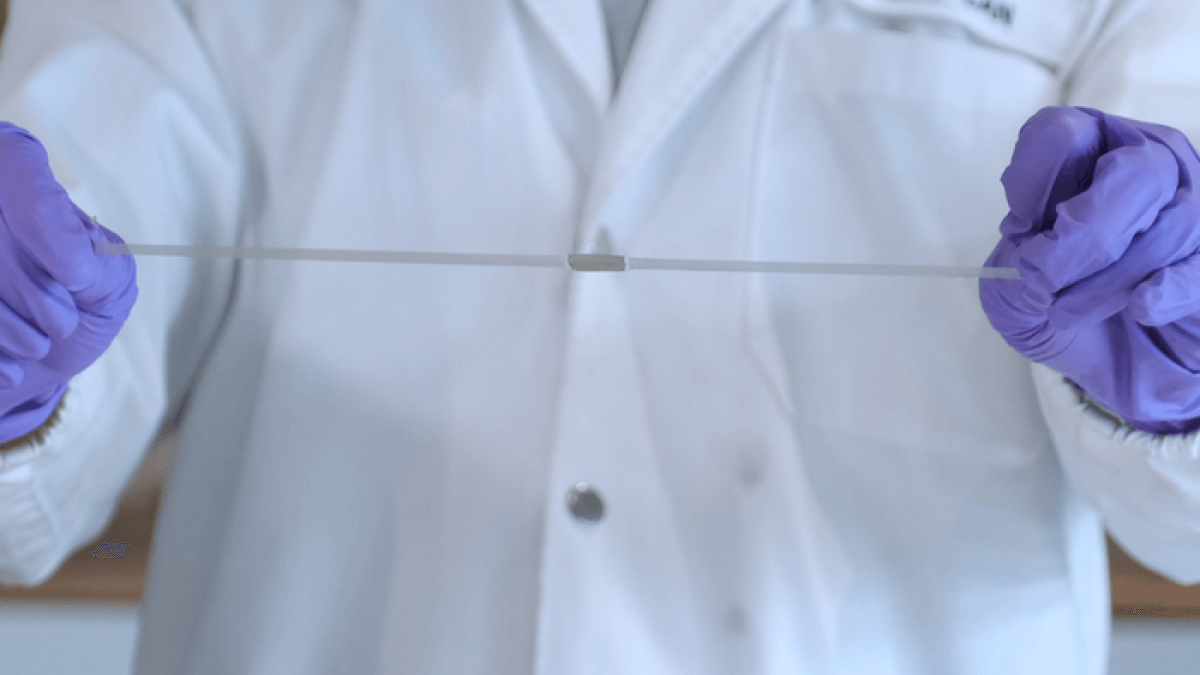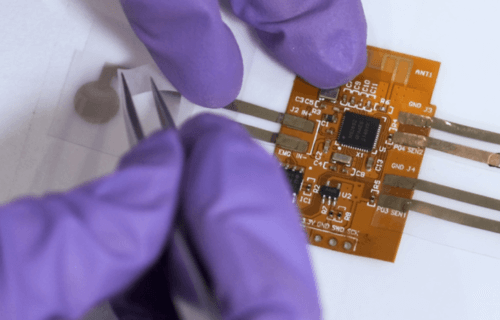SINGAPORE — Smartphones and medical devices could soon look a lot like a child’s LEGO set! Scientists are creating a “one-size-fits-all” connector that makes assembling complex machinery as simple as stacking the popular building blocks. It opens the door to cheaper and better iPads, fitness trackers, blood pressure monitors, and pacemakers.
A team in Singapore say the everyday gadgets require several components with different material characteristics, ranging from soft to rigid.
“Our breakthrough innovation makes it very easy to form and use a stretchable device since it works like a ‘universal connector,’” says lead author Chen Xiaodong, the President’s Chair Professor in Materials Science and Engineering at NTU Singapore, in a media release.
Named BIND (biphasic, nano-dispersed interface), the technology works by pressing them together, just like the plastic toys. Prof. Xiaodong adds that their connector provides excellent mechanical and electrical performance.
“Any electronic module bearing the BIND interface can be connected simply by pressing them together for less than 10 seconds. Moreover, we do away with the cumbersome process of building customized interfaces for specific systems, which we believe will help accelerate the development of stretchable devices.”

This could help build soft robots with amazing flexibility
Using the invention, manufacturers will “plug-and-play” the bits together according to their designs, making the process much more convenient. Current commercial pastes or glues which connect modules often fail to transmit signals reliably or suffer damage easily. Creating custom-built alternatives with enough strength to perform their tasks has been a long-standing challenge.
In experiments, modules joined by BIND were able to withstand stretching of up to seven times their original length before breaking. Electrical transmission also remained almost three times as robust. The study, published in the journal Nature, found it was 60 times tougher than conventional connectors.
“These impressive results prove that our interface can be used to build highly functional and reliable wearable devices or soft robots. For example, it can be used in high-quality wearable fitness trackers where users can stretch, gesture, and move in whichever way they are most comfortable with, without impacting the device’s ability to capture and monitor their physiological signals,” says Dr. Jiang Ying, a research fellow at the NTU School of Materials Science & Engineering.
These devices could even work underwater
Tests on rats showed reliable signal quality despite interference on wirings, such as touching and tugging. When attached to human skin, BIND collected high-quality EMG (electromyography) signals that measure muscle contraction and relaxation — even underwater.
The team made these devices using thermally evaporated gold or silver nanoparticles and a soft plastic commonly used in electronics.
“This research presents a significant achievement in developing an electrical bonding technique with excellent elasticity, avoiding stress concentration at the interconnection between modules with different rigidity, thereby reducing noise generation. Acceleration of industrial application of stretchable devices is anticipated with the establishment of an industrially scalable high-throughput manufacturing method,” adds Professor Takao Someya from the Department of Electrical and Electronic Engineering at the University of Tokyo.
BIND would give consumers a chance to choose from a range of components and replace or upgrade them when necessary, improving their sustainability.
“This new universal and simple plug-and-play approach developed by Prof Chen Xiaodong and his team is significant because it will enable the rapid combining of different components by simple pressing to form devices with various functionalities and complexities, accelerating the development of the field of stretchable electronics,” concludes Professor Shlomo Magdassi from the Institute of Chemistry at The Hebrew University of Jerusalem.
Researchers have already filed for an international patent. Prof. Xiaodong and colleagues are now working on a more efficient printing technology. It will expand choice of materials and final application, accelerating translation from the lab to store shelves.
South West News Service writer Mark Waghorn contributed to this report.

